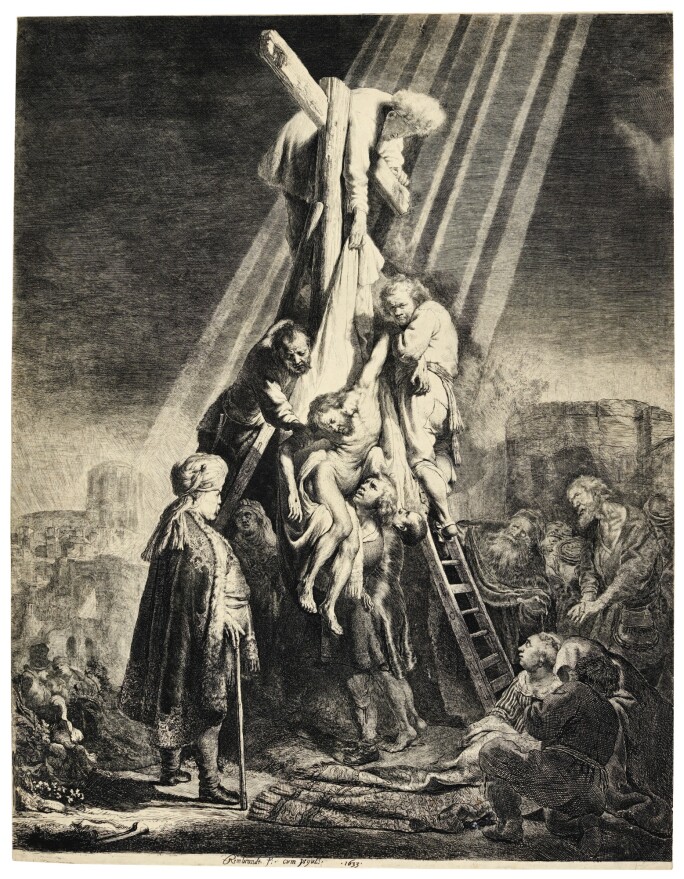Rembrandt van Rijn’s monumental masterpiece The Night Watch is considered by many to be the pinnacle of Golden Age Dutch painting. Formally titled “Militia Company of District II under the Command of Captain Frans Banninck Cocq” the dramatically rendered military group portrait has an epic history all its own marked by confusion, discovery and violence.
C reated at the height of the Dutch Golden Age, the 1642 painting presents an Amsterdam militia with leader Captain Frans Banning Cocq at center, clad in black with a striking red sash and his lieutenant, Willem van Ruytenburch, beside him in pale yellow. The men of the battalion are clustered behind, engaged in a flurry of activity and toting instruments, guns and muskets. One figure at the upper left raises the standard colors of the ensemble. Rembrandt’s innovative decision to depict the militia in a moment of action – rather than a traditional composed group portrait – as well as the work’s nearly life-size scale made the painting a triumph of 17th-century Dutch Art.
The painting’s fame has only been heightened by its storied and indeed dramatic history. The painting has been subject to attack on three separate occasions — the last, an attack by knife, left the painting in need of extensive restoration. Even its nickname – The Night Watch – has proved contentious. The long-accepted interpretation of the painting as a nocturnal scene was confounded when conservationists discovered that its darkest hues were the result of a poorly aged varnish.

Considered one of Rembrandt’s crowning achievements, The Night Watch evinces the Dutch master’s singular ability to convey subtleties of light and texture. The arresting tenebrism, or the dramatic play of light and shadow, in this painting hints at Rembrandt’s continued interest in the work of Italian Baroque artist Caravaggio, who died in 1610. Rembrandt was born just a few years earlier in Leiden in 1606 and had moved to Amsterdam by the early 1630s where he established himself as a highly sought-after portraitist. By the time he painted The Night Watch Rembrandt was at the height of his creative powers and perhaps the most famous artist in a circle that included the likes of Frans Hals and Johannes Vermeer.
The centerpiece of the Rijksmuseum, Amsterdam, The Night Watch has been been held at the museum almost continually since the museum opened in 1885. During World War II the painting was removed from its frame for safekeeping and stored in subterranean caves outside of Maastricht until the end of the war. The Rijks has one of the most preeminent collections of his work in the world and is additionally home to The Jewish Bride and several celebrated self-portraits. Also in the city of Amsterdam is the Rembrandthuis, the meticulously restored mansion where the artist ran an active studio until his bankruptcy in 1656. In 2019, the museum will host a series of special events and exhibitions to commemorate the 350th anniversary of the Dutch master's death. Not far from Amsterdam in the Hauge, Mauritshuis – a treasure trove of Dutch Golden Age paintings – offers another remarkable collection of Rembrandt's works such as the famed The Anatomy Lesson. Sotheby’s has offered many drawings, etchings and paintings by Rembrandt. In March 2018, his etching The Descent from the Cross doubled its estimate at auction in Sotheby’s London.










